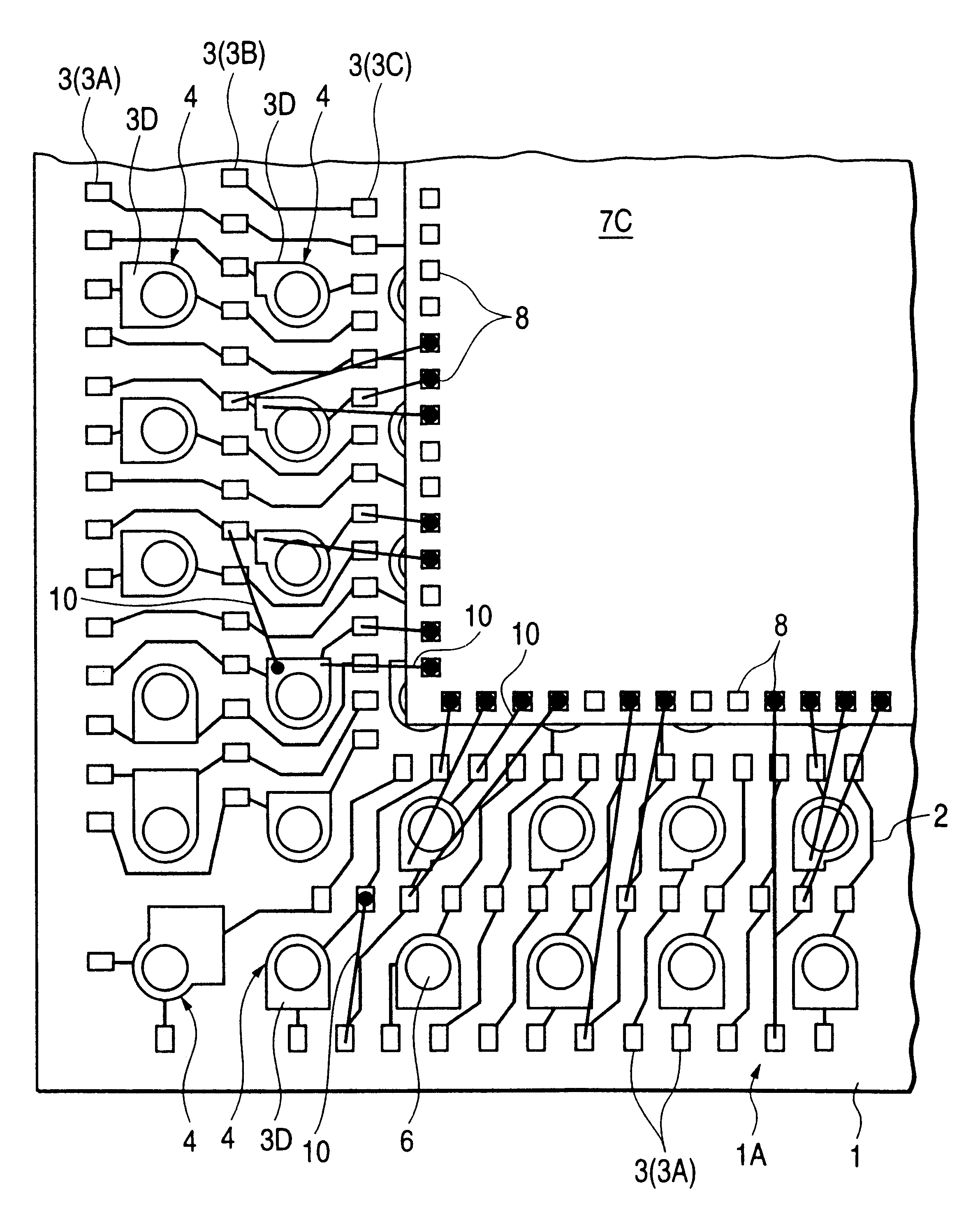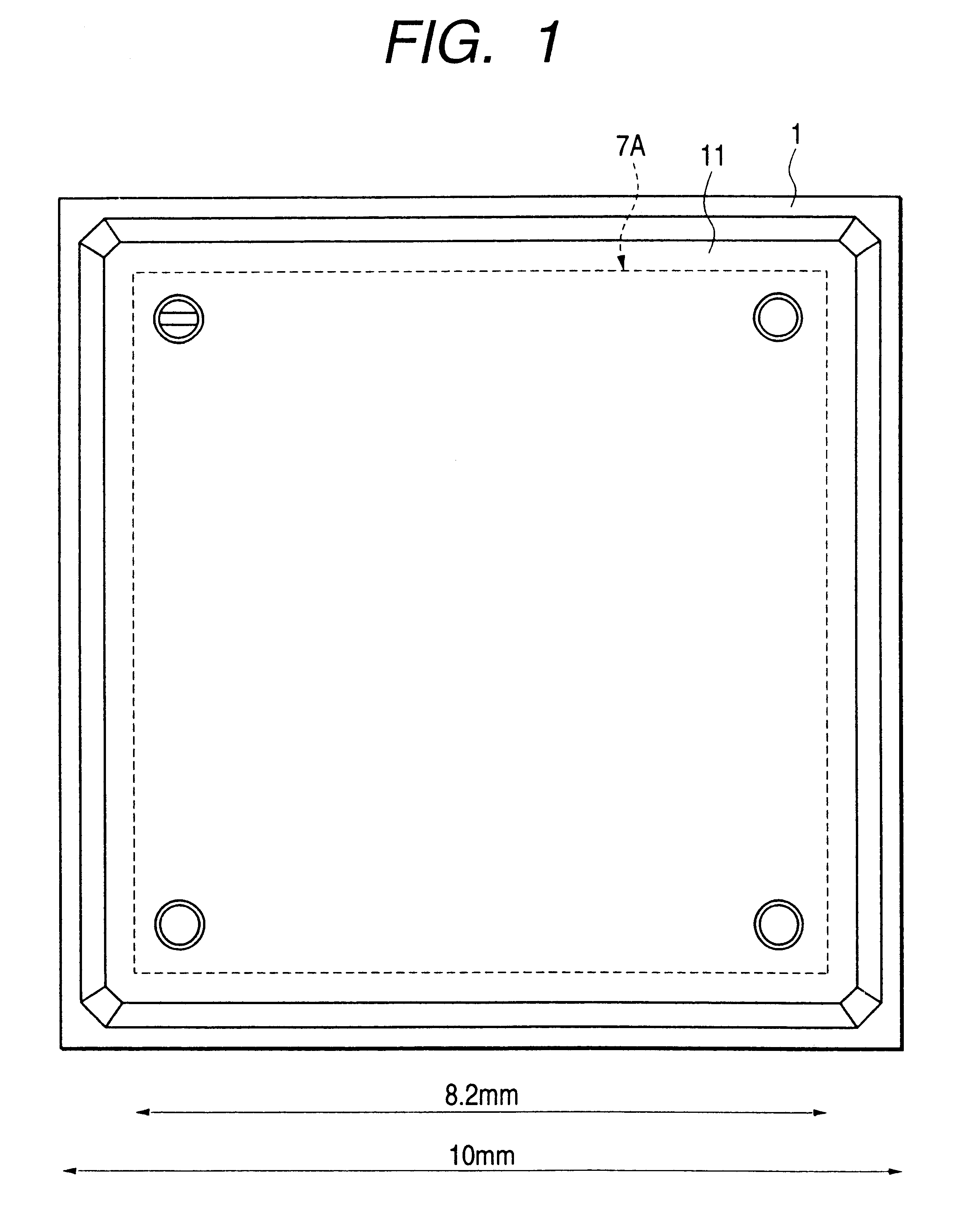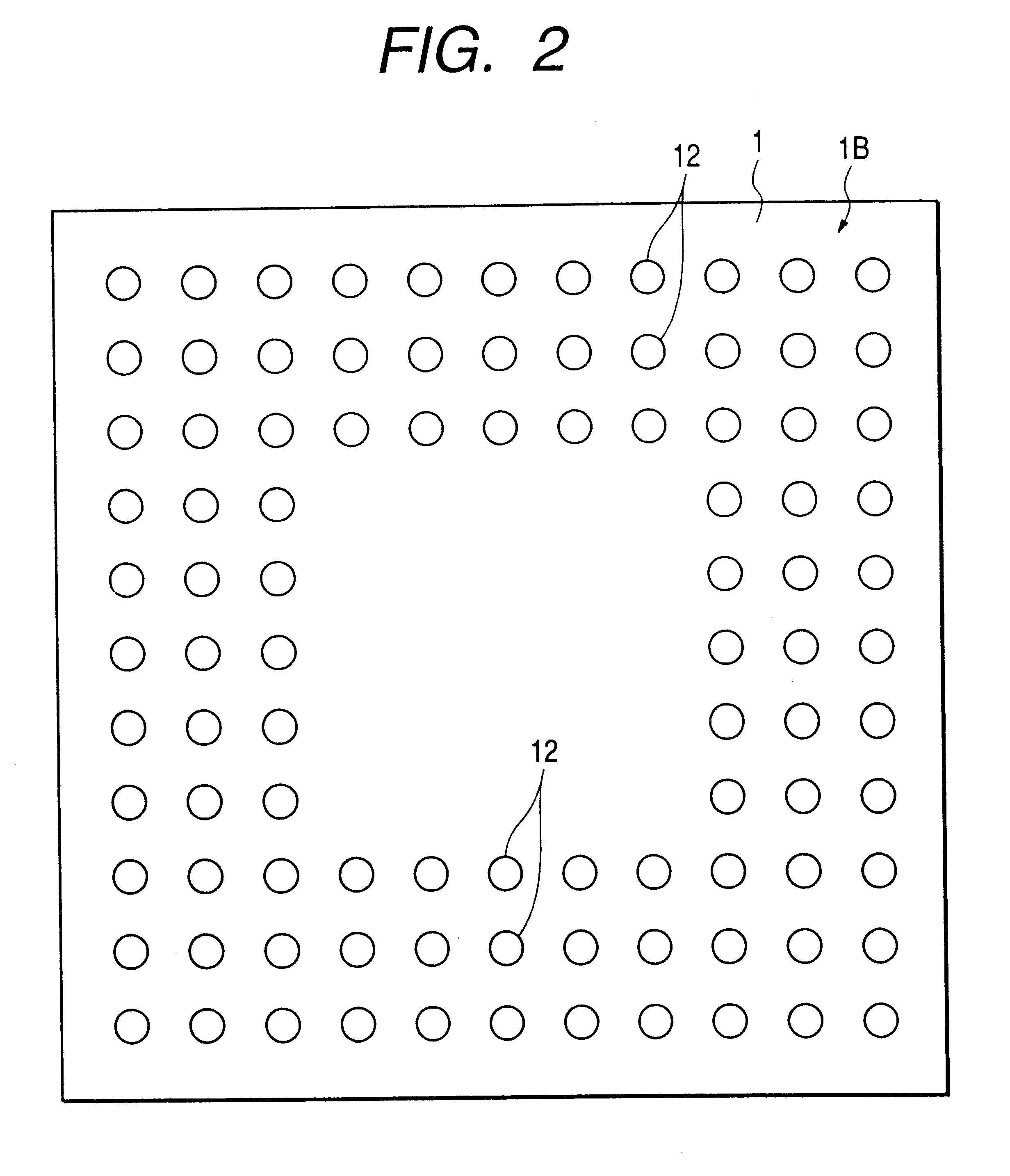Semiconductor device
a technology of semiconductor devices and semiconductor, which is applied in the details of semiconductor/solid-state devices, semiconductor devices, electrical apparatus, etc., can solve the problems of markedly lowering the production yield of semiconductor devices, and achieve the suppression of an increase in the length of wires, shortening the wire length, and suppressing the effect of wire sagging
- Summary
- Abstract
- Description
- Claims
- Application Information
AI Technical Summary
Benefits of technology
Problems solved by technology
Method used
Image
Examples
embodiment 2
[0049]FIG. 22 is a fragmentary plan view illustrating the semiconductor device of the present invention from which a resin sealing body has been removed;
embodiment 3
[0050]FIG. 23 is a plan view illustrating the substrate of the semiconductor device of the present invention; and
embodiment 4
[0051]FIG. 24 is a fragmentary cross-sectional view illustrating the semiconductor device of the present invention.
DESCRIPTION OF THE PREFERRED EMBODIMENTS
[0052]Embodiments of the present invention will be described more specifically with reference to accompanying drawings. In all the drawings illustrating the embodiments of the present invention, like elements having the same function will be identified by like reference numerals and overlapping description will be omitted.
PUM
 Login to View More
Login to View More Abstract
Description
Claims
Application Information
 Login to View More
Login to View More - R&D
- Intellectual Property
- Life Sciences
- Materials
- Tech Scout
- Unparalleled Data Quality
- Higher Quality Content
- 60% Fewer Hallucinations
Browse by: Latest US Patents, China's latest patents, Technical Efficacy Thesaurus, Application Domain, Technology Topic, Popular Technical Reports.
© 2025 PatSnap. All rights reserved.Legal|Privacy policy|Modern Slavery Act Transparency Statement|Sitemap|About US| Contact US: help@patsnap.com



